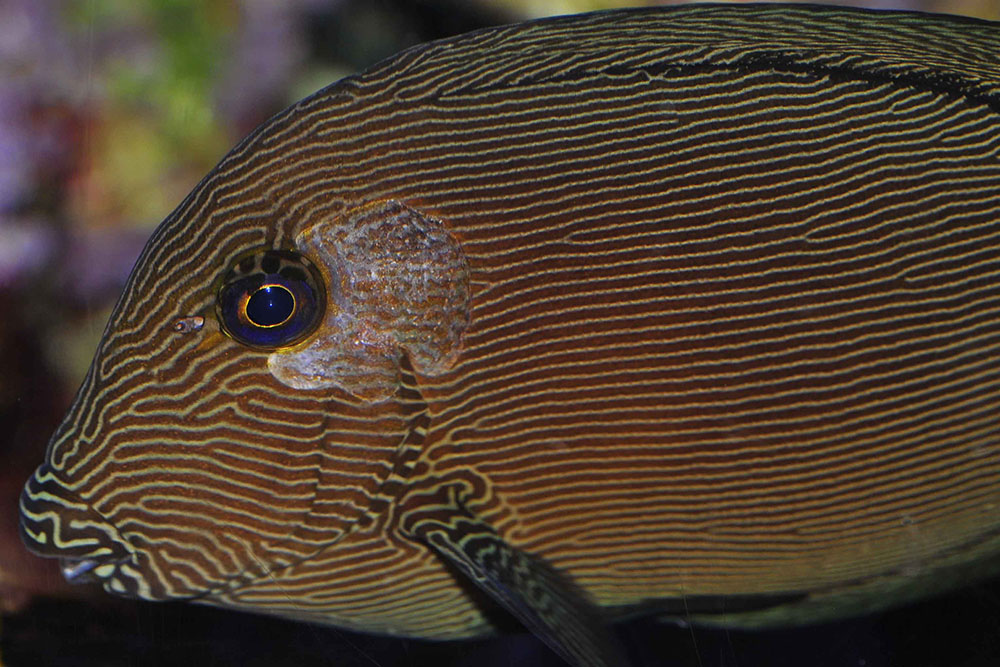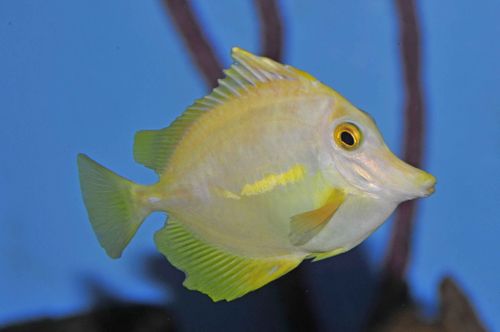In preparation for a research project on Head and Lateral Line Erosion (HLLE) in fishes, I undertook a quick survey of 100 intermediate to advanced aquarists regarding their opinions about this syndrome. Here is the raw data:
1) What do you think are the POSSIBLE causes of Head and Lateral Line Erosion (HLLE)? (Check all that apply)
Bacterial infection 31.3%
Carbon (by removing essential elements) 30.3%
Carbon (Dust – as an irritant) 28.3%
Copper medication 19.2%
Diet, lack of vitamin C 62.6%
Diet, lack of HUFA’s 40.4%
Diet, lack of fiber 20.2%
Electrical grounding problems 32.3%
General stress from captivity 55.6%
Iodine, lack of 10.1%
Protozoan infections, Hexamita, 31.3%
Nitrate, high levels 36.4%
Sunlight, lack of 32.3%
Viral infection 19.2%
Other causes not listed above:
Ozone, ozone-oxidants (3)
Lack of trace elements (3)
Heavy metals other than copper (4)
Poor lighting (2)
Stress from tankmates (4)
Water temperature (1)
Undetermined water quality problem (6)
Pump noise (2)
Global warming (1)
Lack of vitamin A (1)
Genetic predisposition (1)
Dinoflagellates (1)
Starvation during supply chain (1)
2) What do you feel is the SINGLE most important cause of this syndrome in fish? Pick just one answer:
Bacterial infection 2.1%
Carbon (by removing essential elements) 4.1%
Carbon (Dust – as an irritant) 5.2%
Copper medication 6.2%
Diet, lack of vitamin C 15.5%
Diet, lack of HUFA’s 11.3%
Diet, lack of fiber 4.1%
Electrical grounding problems 5.2%
General stress from captivity 24.7%
Iodine, lack of 0.0%
Protozoan infections, Hexamita 4.1%
Nitrate, high levels 4.1%
Sunlight, lack of 10.3%
Viral infection 3.1%
3) Have you ever been able to completely resolve a case of HLLE? If so, indicate methods used:
Moved fish to a new tank 37.5%
Kept fish in same tank, changed diet 19.4%
Moved fish, changed diet 29.2%
Removed carbon 12.5%
Removed copper 5.6%
Added grounding probe 5.6%
Changed water 18.1%
Added supplements 20.8%
Did nothing, went away on its own 5.6%
Other methods used to completely resolve HLLE, not listed above
Regranex treatments (8)
Water changes ( 1)
Moving fish combined with other changes (8)
Treated with Metronidazole (4)
Selcon food additive (1)
Algae added to diet (2)
Garlic (1)
Cured fish of velvet (1)
Added protein skimmer (1)
Reduced ozone oxidants (1)
Reduced stress from tankmates (1)
4) Please indicate your aquarium experience: (choose single best answer)
Beginning home aquarist 0%
Intermediate home aquarist 12%
Advanced home aquarist 15%
Retail pet store employee / owner 3%
Public aquarist 37%
Public aquarium manager / director 29%
Marine / fisheries biologist 4%
In evaluating these results, it becomes apparent that this information is best used for its qualitative information as opposed to attempting to quantify the results. Remember that few truly scientific studies have been done researching HLLE, so most, if not all of these responses were people’s opinions, based on anecdotal information. That said, there is some potentially useful data in the survey results if you look for it:
Two-thirds of the data came from people who responded to the survey through AquaticInfo, the public aquarium listserve. The other third were intermediate to advanced aquarists from the reefs.org and Reef Central message boards. The other important bit of information was that 2/3 of the cures involved moving the fish to a new aquarium. In fact, if I had constructed the survey questions differently, I suspect that this value would have been higher. For my own facility, 100% of the remissions we have seen involved moving the fish to a new aquarium.
As the survey administrator, I had the benefit of seeing each response by itself – so I could see which data came from public aquariums, and which came from home aquarists. Much of the outlaying data came from the intermediate home aquarium sub-set (the use of grounding probes, Selcon, garlic, etc.) When only the public aquarium responses were looked at, some even stronger trends appeared:
83.9% of the reported “cures” involved moving the affected fish to a new aquarium.
18.6% of the public aquarists reported complete reversal of HLLE by removing carbon.
75.4% of this sub-group implicated the use of carbon in the development of HLLE, followed by lack of Vitamin C at 63.1% and “general stress from captivity” at 56.9%
The study that I will be undertaking will examine the role that carbon dust (as an irritant) plays in the development of HLLE in marine fish. It will be funded by the conservation and science department of my facility. If anyone has any additional anecdotes regarding the carbon dust / HLLE connection, please let me know.






